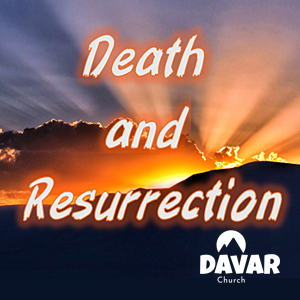Scripture: John 20:1-18, 14:18-19, etc.
On this mountain he will destroy (swallow)
the shroud that enfolds all peoples,
the sheet that covers all nations;
he will swallow up death forever.
The Sovereign LORD will wipe away
the tears from all faces;
he will remove
the disgrace of his people from all the earth.
The LORD has spoken (Isa 25:7-8).
“This mountain” is Mount Zion. The words translated as “shroud” and “sheet” are lot and massekhah, respectively, and both refer to cloth that wraps the body or objects. Lot is a cloth used for mourning, and it covers the whole earth. Massekhah comes from the verb ’to pour out’ and suggests that the spirit of death has been poured out and is draped over the world like a woven cloth. The subject is “Yahweh,” and he will swallow up these cloths. The verb ‘to swallow (billa’)’ connotes destruction. These two cloths are connected to the cloth that wrapped Jesus’ body and another that covered his face when he was buried. The cloth symbolizes the death of all mankind, but God destroyed it through Jesus Christ.
Early on the first day of the week, while it was still dark, Mary Magdalene went to the tomb and saw that the stone had been removed from the entrance. So she came running to Simon Peter and the other disciple, the one Jesus loved, and said, “They have taken the Lord out of the tomb, and we don’t know where they have put him (John 20:1-2)!”
Mary Magdalene was most concerned about the body of Jesus. Not being able to grasp firmly that Jesus had died, she felt that he was still present where his body was. Yet, very sadly, his body was gone, and she didn’t know where it was. While the other women were perplexed, she immediately ran to where Peter and John were and told them alone.
So Peter and the other disciple started for the tomb. Both were running, but the other disciple outran Peter and reached the tomb first. He bent over and looked in at the strips of linen lying there but did not go in (vv. 3-5).
The way John, the author, details that “the other disciple” arrived at the tomb first shows that he is writing about what he experienced that day and that it was him.
Then Simon Peter, who was behind him, arrived and went into the tomb. He saw the strips of linen lying there, as well as the burial cloth that had been around Jesus’ head. The cloth was folded up by itself, separate from the linen. Finally the other disciple, who had reached the tomb first, also went inside. He saw and believed (vv. 6-8).


